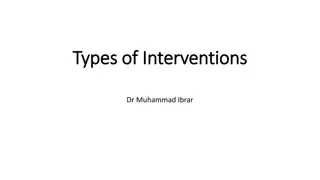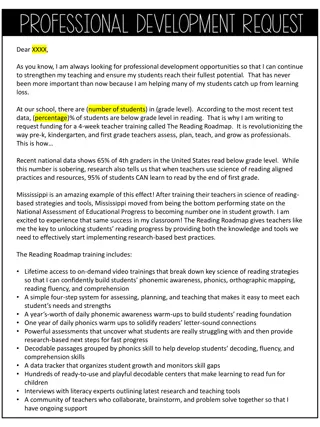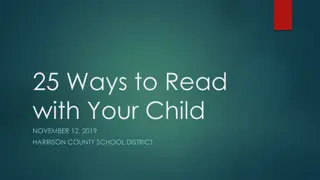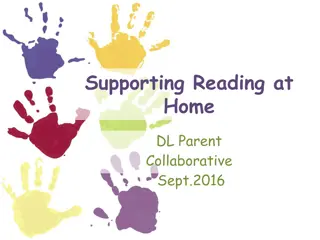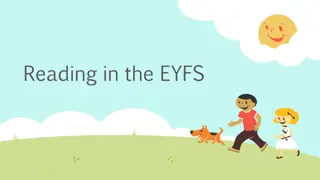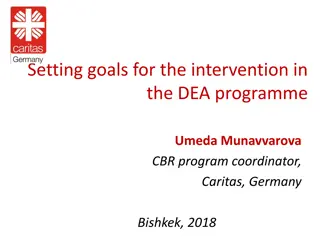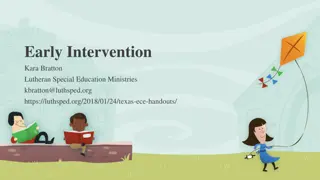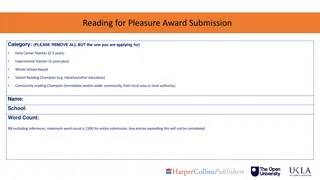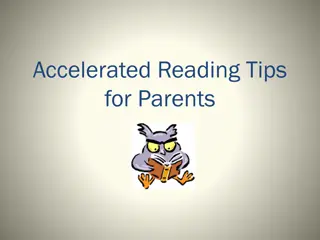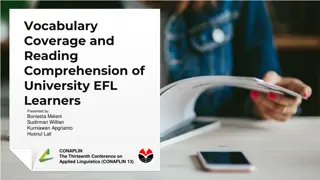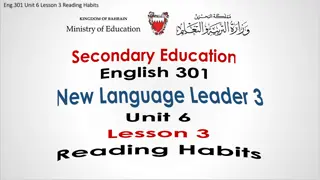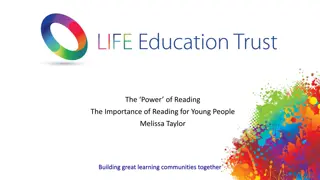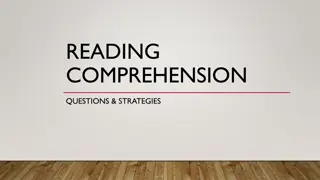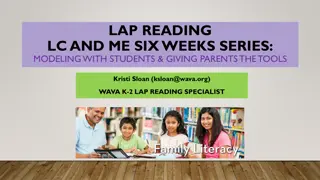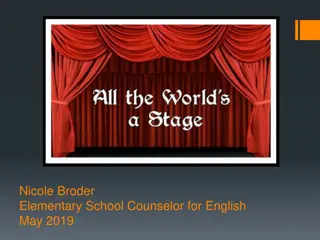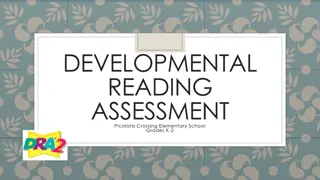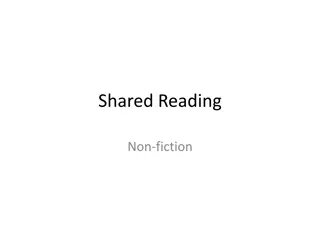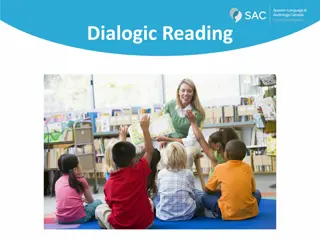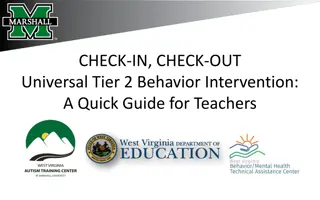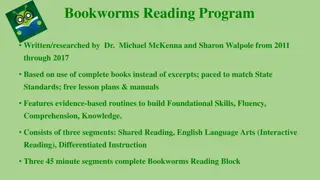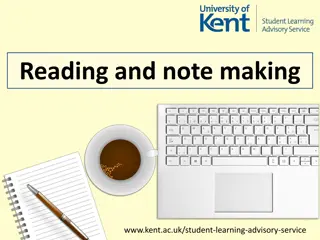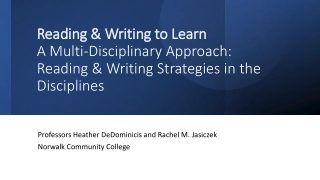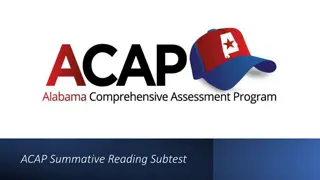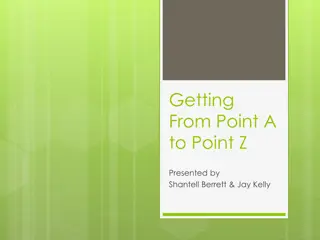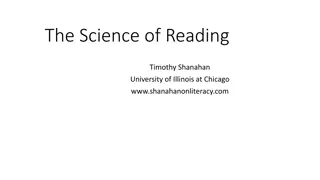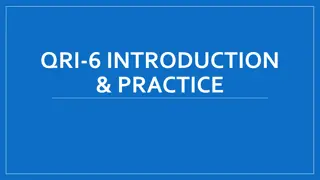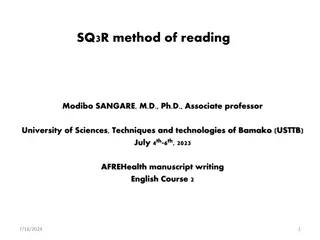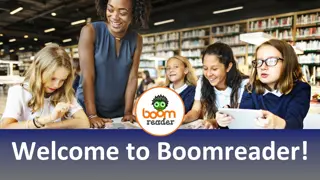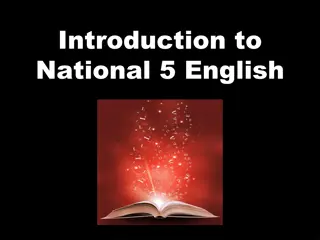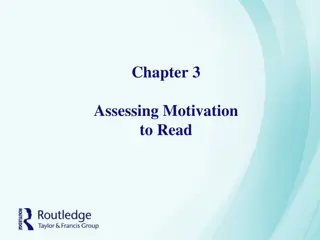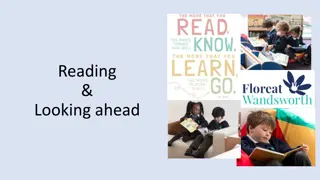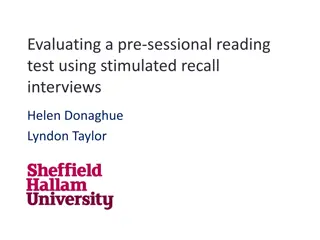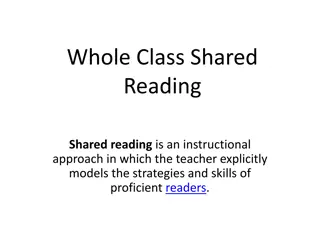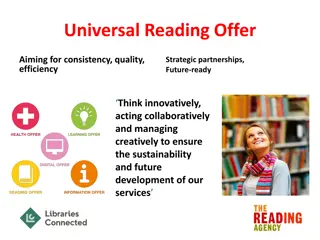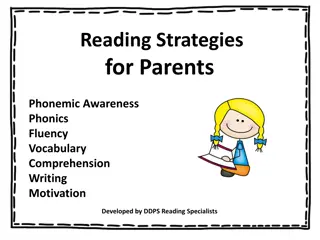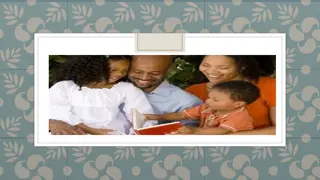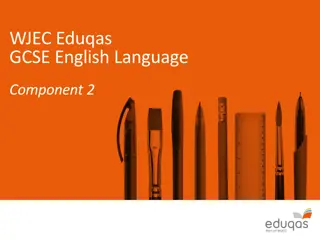Comprehensive Guide for K-2 Reading Intervention
This comprehensive guide for parents of K-2 students outlines effective reading intervention strategies to develop fluent and thoughtful readers. It covers essential elements like word recognition, comprehension, vocabulary, and offers practical activities to enhance word identification, decoding skills, and reading context understanding through phonics, word sorting, writing exercises, and more.
Uploaded on Sep 12, 2024 | 0 Views
Download Presentation

Please find below an Image/Link to download the presentation.
The content on the website is provided AS IS for your information and personal use only. It may not be sold, licensed, or shared on other websites without obtaining consent from the author. Download presentation by click this link. If you encounter any issues during the download, it is possible that the publisher has removed the file from their server.
E N D
Presentation Transcript
A guide for parents of K-2 students
Effective reading intervention consists of two essential elements in the development of fluent and thoughtful readers. Word recognition Comprehension & Vocabulary
Several activities that will help to develop ability to identify and sound out words Phonics - Isolate: Make a Word - Practice: Word Sort & Pick-Up - Write: Writing for Sounds Reading in Context: Decodable Book with Autograph Reading Sight Words: Word Bank Fluency: Talking Dictionary
Activities that will help to develop ability to decode words and understand the context of reading Comprehension - Narrative Text: Plot Relationship Chart - Expository Text: About Point (Notetaking) Vocabulary: Personal Clues
Helps isolate letter sounds and create words. 1. Choose a word family or spelling pattern. (Ex) -in,-an,-ot, etc. 2. Make a list of words in the word family. (Ex) -infamily : bin, fin, pin, twin, thin, grin, chin 3. Create letter cards that contain all the letters from the list. 4. Child makes words using these letters.
p b f h c r g t w i n
Helps practice reading the letter and sound combinations. 1. Put the words from Make a Word activity on cards. 2. Create another list of words for a different word family on cards. (ex) -in family : bin, fin, pin, twin, thin, grin, chin -an family : ban, fan, pan, ran, plan, man, van 3. Combine all cards and child sorts them into category. 4. After sorting, child picks up and reads word cards alternating from each group.
twin thin chin grin -in fin bin pin plan van man pan -an fan ban ran
Helps apply phonics knowledge through writing. 1. Choose 6-8 words from the previous activities. 2. Child hears and writes the words. 3. Child reads the word by stretching the sounds. 4. Add new words that contain the same spelling pattern.
pin twin grin shin ran van bran
Helps use the spelling pattern within the context of a story and practice reading. 1. Stories emphasizing a variety of spelling patterns can be found at www.getthinkingworks.com and also at http://mrstsfirstgradeclass- jill.blogspot.com/2011/08/decodable-story- reading-passages.html 2. Child practices reading it to several people. Each listener signs an autograph sheet.
Autograph Reading -in #1 Ginny had a big grin when she found out she was the winner of a big pumpkin. She had to spin the spinner to win the prize. As she stepped toward she hit her shin and broke the skin on her shin. Ginny had to squint as her kin pulled a band-aid out of the tin bin and put it on her knee. Name:_____________________ Title:_______________________ Read a story to 5 different people. Once they have heard you read, have them sign their autograph. 1. ___________________________ 2. ___________________________ 3. ___________________________ 4. ___________________________ 5. ___________________________ by D. Brakefield
Helps learn to recognize words instantly. 1. Write words that your child is learning on cards. Include high-frequency words. 2. Child practices identifying words everyday. When read correctly, put a star on the card. 3. When child reads the word accurately five times, put the card into Words I Know bank.
Words I am Learning Words I Know strange grin
Helps develop reading fluency. 1. Child reads a book for three minutes. When child encounters an unknown word, say the word. Count words child reads correctly. 2. Child rereads the book in the same amount of time. Count words child reads correctly. 3. Graph the number of words read from both readings for your child to see improvement.
Words Read Correctly 145 140 135 130 Words Read Correctly 125 120 115 1st Reading 2nd Reading
Helps to focus on the problems and solutions in a story. Use with narrative texts. Child reads a story. 1. 2. Help determine key details from the story using the outline as a guide. Somebody (character) Wanted But (difficulties encountered) So (Conclusion) 3. Once the chart is completed, have child read it to you.
Somebody Wanted But So Goldilocks to see who lived in the house in the woods no one was home She explored the house on her own and she tried things that belonged to the bears. She ate porridge, sat in their chairs, and lied in their beds.
Helps to determine the main idea in a paragraph or short story. Use with expository texts. 1. Child reads a paragraph or short story. 2. Child summarizes the topic (About) and what the author informs about the topic (Point). 3. Then child writes a statement combining the About and the Point.
About: Tyrannosaurus Rex Point: was a large and fearsome predator. Statement: Tyrannosaurus Rex was a large and fearsome predator.
This strategy is an extension of the About Point strategy. Use with expository texts. 1. Child reads a paragraph or short story. 2. Child summarizes the topic (About), what the author informs about the topic (Point), and important details (Details). 3. Then child writes a summary combining everything.
About: Tyrannosaurus Rex Point: was a large and fearsome predator. Details: 1. The T-rex could grow up to 40 feet long and be up to 13 feet tall. 2. The T-rex was a predator with strong jaws that had up to 60 teeth. 3. The T-rex was a carnivore that hunted and ate other dinosaurs. Summary: Tyrannosaurus Rex was a large and fearsome predator. The T-rex could grow up to 40 feet long and be up to 13 feet tall. The T-rex was a predator with strong jaws that had up to 60 teeth. The T-rex was a carnivore that hunted and ate other dinosaurs.
Help understand and remember new vocabulary by making connections to personal experiences. 1. Child writes a new vocabulary word on card. 2. Then, child writes or draws the clue that will help remember the definition. 3. Write definition on the back of the card.
Word: exhausted Definition: very tired Clue: how I feel after a soccer game Back Front


